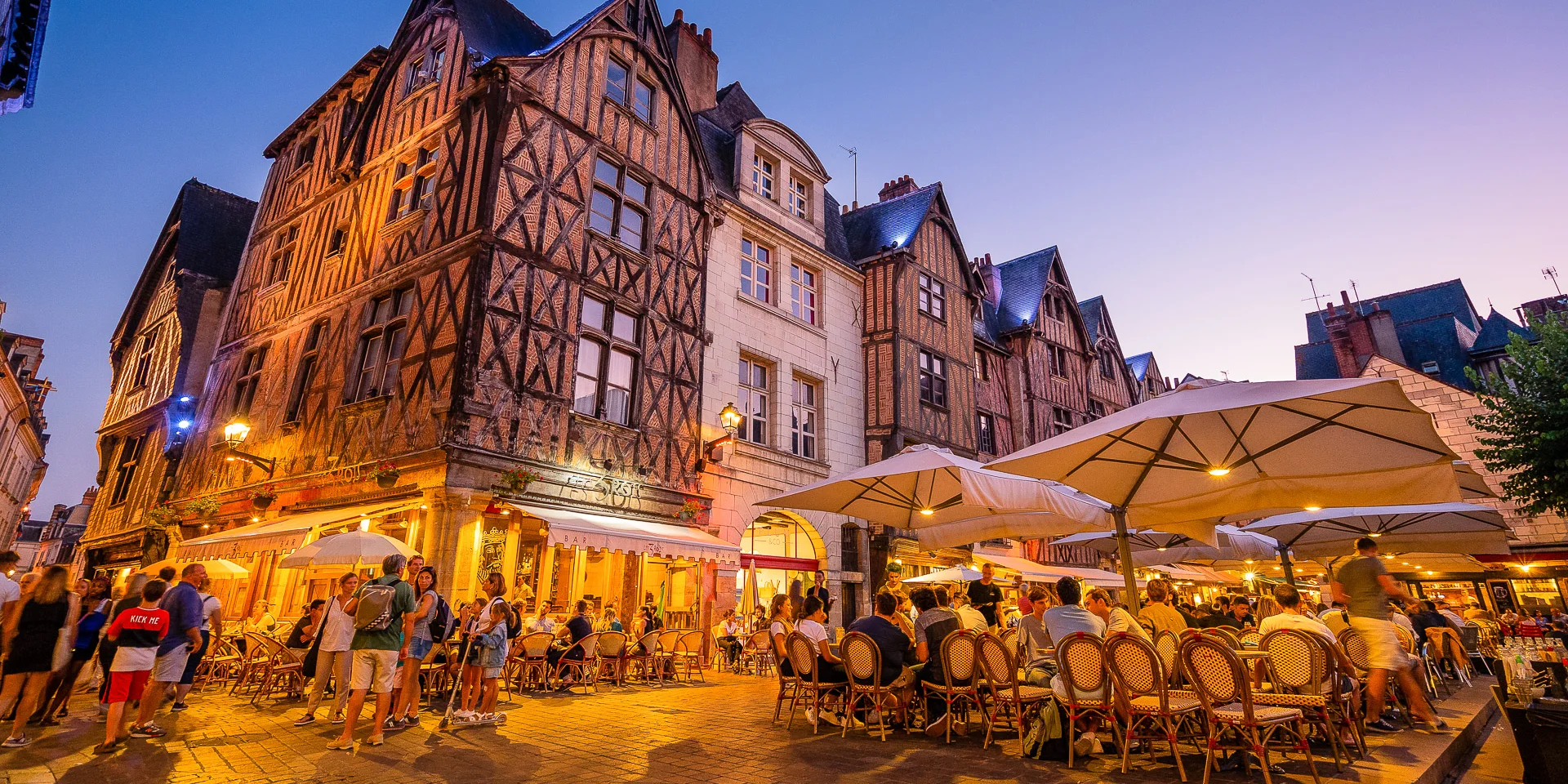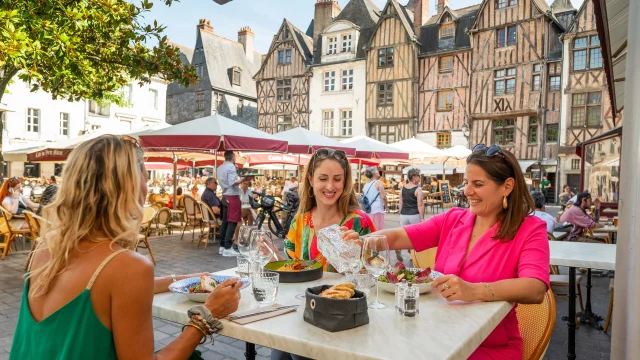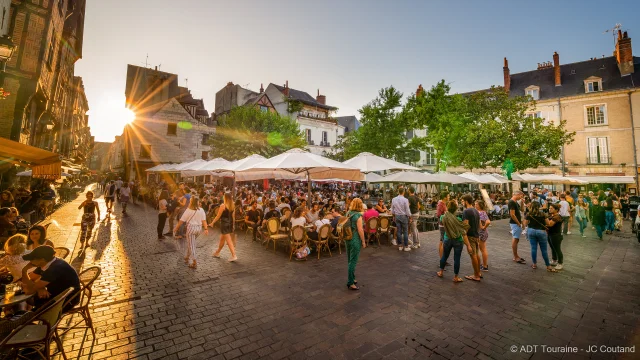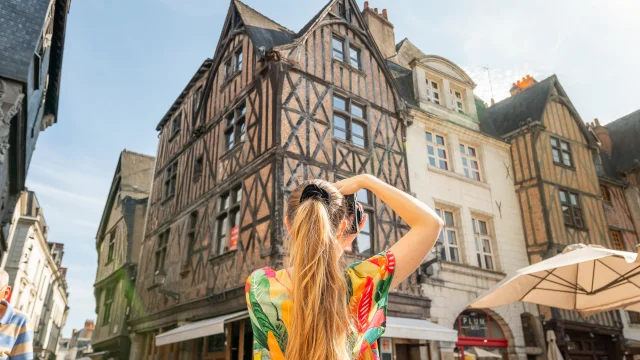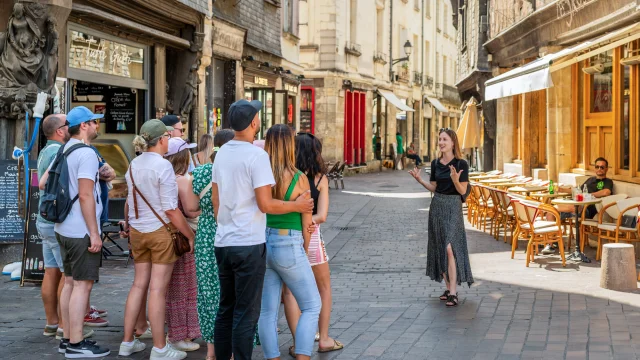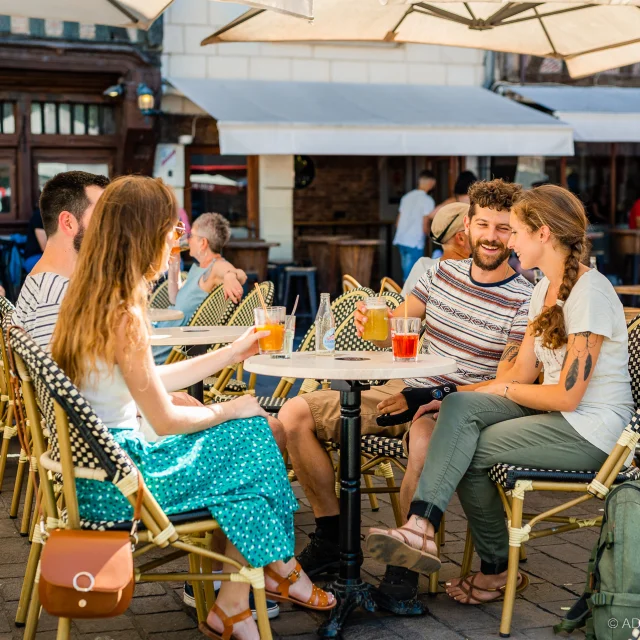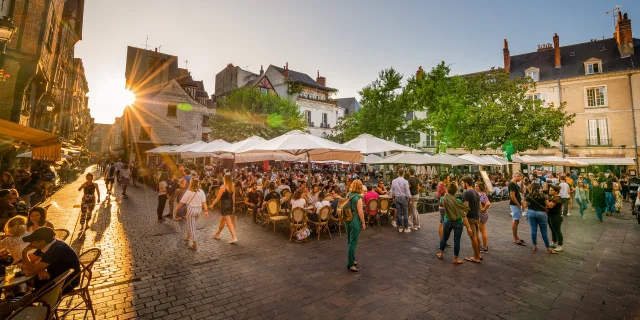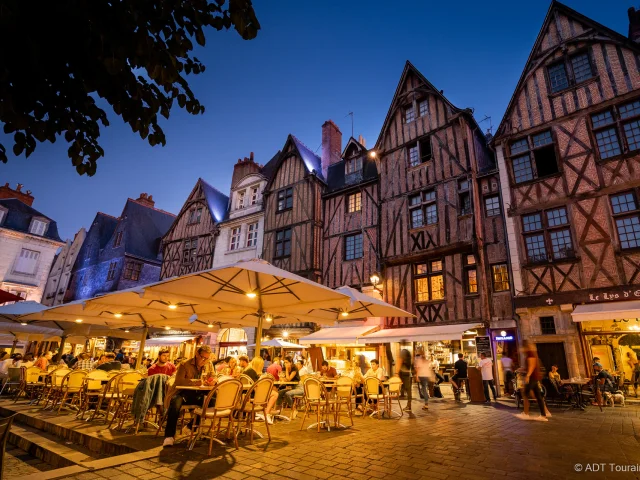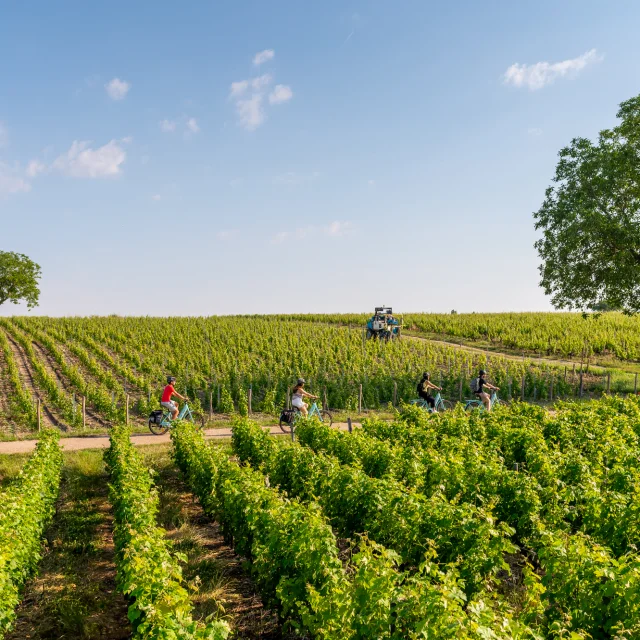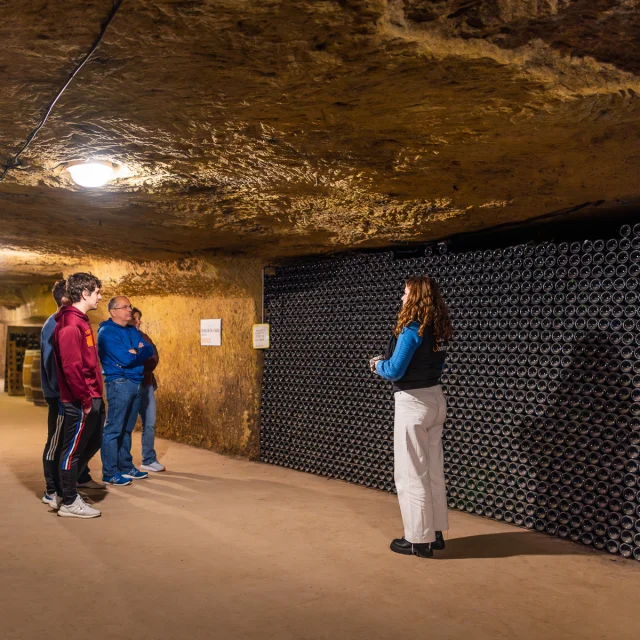In the heart of the historic centre of Tours
Affectionately nicknamed“Place Plume” by Tourangeaux, it owes its name to Charles Plumereau, a former town councillor who bequeathed his fortune to the town in 1885.
In this high spot in the pedestrian zone, the past harmoniously dialogues with the present. The adjacent alleyways invite you to stroll towards le Grand-Marché or the basilique Saint-Martin. When evening comes, the square becomes the scene of a gentle effervescence where students and visitors share convivial moments under the lanterns that illuminate the ancient timber-framed structures.
As you pass under a porch on the north side, you can see the remains of the church of Saint-Pierre-le-Puelllier. Heading towards the quays of the Loire, on the way to the place des Joulins, the streets are very narrow. As you explore the area, discover some Romanesque, Gothic, Renaissance and classical houses.
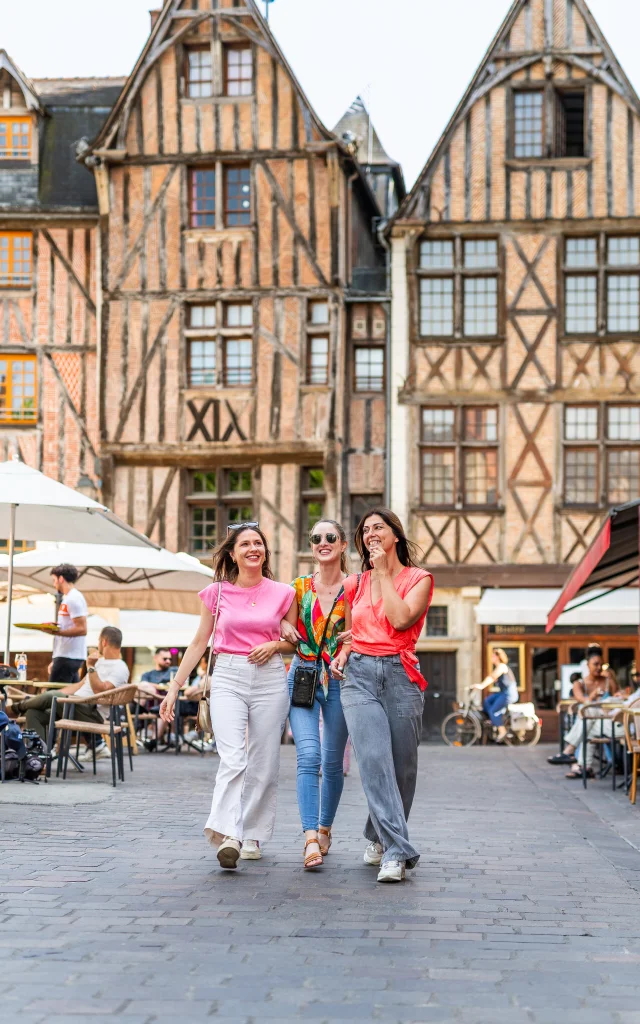 Place Plumereau, Tours
Place Plumereau, Tours